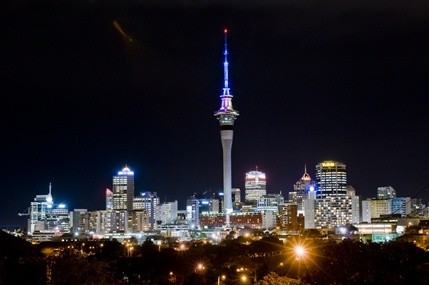Kees van der Klauw, Senior Vice President at Philips Research shares his insights on smart city streetlights in this blog entry.
Within ten years, two out of three people will be living in urban areas, many of them in big cities, which means – now more than ever – that these cities need to be functional and sustainable.
Lighting today is an essential element of public spaces; it is almost everywhere, and there are approximately 500 million street lights installed around the world. However, currently less than 1% of all our global street lights are connected or intelligent. With the emergence of big data, the internet of things and connected, digital lighting, we’re going to bring much more intelligent functionality into our lighting systems – lighting will go beyond illumination.
This trend will play an important role in making cities more livable, more enjoyable, more safe, but also more economically sustainable.
 |
|
Nightview of a city. (All photos courtesy of Philips) |
Lighting becomes connected and intelligent
In addition to the energy saving that LED-based connected lighting systems will bring, there will also be lower maintenance costs. In the near future, intelligent lighting systems will be able to do self-diagnosis, signaling to city management which kind of maintenance is required, and when it is required. They can also autonomously negotiate with power supply systems to balance power demand and supply, obviously leading to much higher energy efficiency.
By integrating sensors in the lighting infrastructure, the range of possibilities can be extended even further. Imagine lighting networks that start monitoring the air quality across the city, that give an overview of traffic and crowd streams, or that measure the amount of precipitation – the opportunities are almost endless.
Bringing the lab to the city
We have to experiment to find out what the needs of modern cities really are, and how we can then address them by applying connected lighting systems in the most useful, efficient and sustainable way.
But to really develop smart lighting solutions that add value and are easy to use, we have to start experimenting with citizens themselves, as early in the development process as possible. So rather than having a laboratory where we as scientists and developers do all the work, we want to move the lab into the city itself. We want to work together on meaningful solutions with the people we’re doing it for: citizens, city managers and governments, and partners in the industry.
 |
|
City nightview features an illuminated tower. |
A shared digital platform for co-creation
We must realize, though, that for all our well-intentioned ambition, we cannot build solutions for a smart city in a day – existing historical cities, for example, have strong restrictions, and completely new-built cities are rare. That’s why we should have a structure in place that allows for incremental developments. To facilitate large-scale experimenting and fast prototyping, we need to provide a smart city platform – a shared, connected digital platform for secure data exchange, respecting ownership and privacy. In that way, we can grant individuals or groups of citizens access to digital tools and data, which will allow us to co-create new lighting concepts that indeed go beyond illumination.
Engaging in an open innovation ecosystem
Philips connected digital LED lighting systems can provide such an incredibly strong and scalable smart city platform. It is very important that we engage in an open innovation ecosystem, bringing together all relevant stakeholders to explore the broad range of opportunities in lighting and beyond. Large-scale piloting on smart city platforms offers an excellent opportunity to rapidly develop and validate new, meaningful applications, involving citizens and partners in a co-creation process.
Technology is a means to an end, and ultimately, that end is improving people’s lives.





 CN
TW
EN
CN
TW
EN







